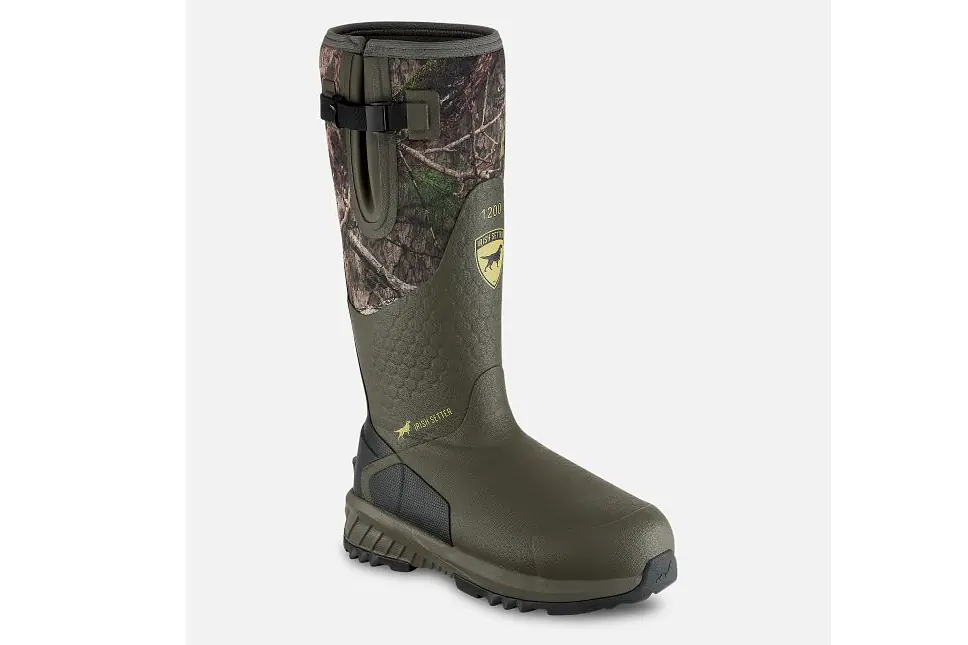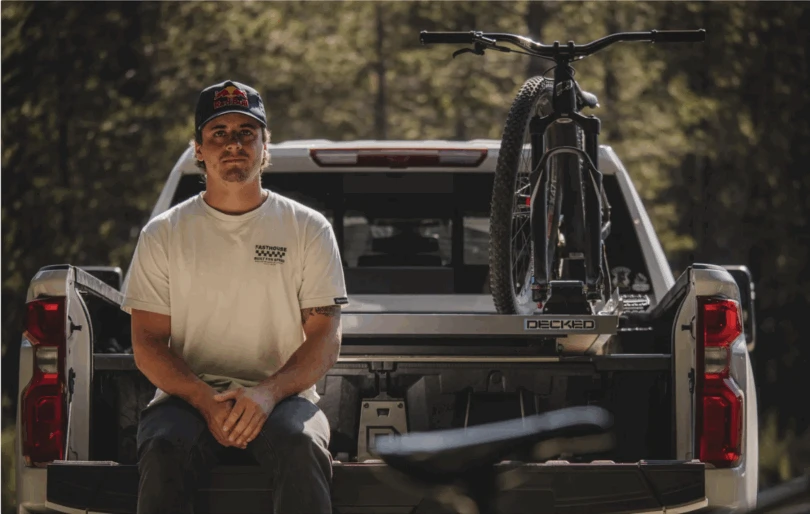Your hunting boot may be one of the most important gear choices you make. They are your single connection point to the terrain, unless you lose your footing and make several painful connection points to the terrain. A bad boot can often mean a bad hunt. You can walk a long way with a lot of bad gear, but once your feet are done, you’re done.
It wasn’t always the case, but women’s hunting boots have come a long way, and I’m glad to say that we have a lot of options. Not long ago, we had to make do with nonspecific hiking boots or winter boots. Today, we have what feels like endless options for hunt-specific women’s boots.
Scroll through to see all of our recommended buys and check out our buyer’s guide for some expert advice on choosing a hunting boot. When it’s time to make a decision you can see a side-by-side breakdown of price and features in our comparison chart.
The Best Women’s Hunting Boots of 2023
Schnee’s Kestrel
- Upper: Top Grain Leather
- Waterproof: 100% Waterproof Sympatex™ Membrane
- Outsole: Vibram™ Circuma™ outsole
- Insulation: Uninsulated
Pros
- Lightweight
- Comfortable
- Supportive
Cons
- Expensive for an uninsulated boot
LaCrosse Clear Shot
- Upper: Nubuck Leather and Nylon
- Waterproof: Waterproof Dry-Core Lining
- Outsole: Crosshair Outsole
- Insulation: 800 grams Thinsulate
Pros
- Incredibly Warm
- Budget Friendly
- Classic Look
- Suitable for Most Cold Weather Hunting
Cons
- A bit stiff
- Require a longer break-in period
Kenetrek Mountain Extreme
- Upper: full grain leather
- Waterproof: Windtex® waterproof breathable flexible membrane
- Outsole: K-Talon™ outsoles
- Insulation: 400 gram Thinsulate™
Pros
- Seriously Stiff for Serious Mountain Work
- Waterproof and Warm
- Sole rigidity to help alleviate foot flex fatigue
Cons
- Seriously Stiff (the break-in period might be harsh)
- Expensive
Danner Wayfinder
- Upper: Suede leather and nylon
- Waterproof: Waterproof Danner dry liner
- Outsole: Danner Wayfinder outsole
- Insulation: 400g Thinsulate
Pros
- Comfortable
- Feels more like an athletic shoe than a boot
- Warm
Cons
- The toebox can be a little tight if you have wider feet
Irish Setter MudTrek Boots
- Upper: Vulcanized Rubber
- Waterproof: TempSense Lining
- Outsole: Aggressive Lug Pattern Outsole
- Insulation: 1200g PrimaLoft
Pros
- Insanely warm
- Comfortable
- 17-inch, adjustable calf keeps everything out
Cons
- Bulky and Clunky
Lowa Renegade GTX
- Upper: Nubuck Leather
- Waterproof: Gore-Tex Lining
- Outsole: Vibram Evo Outsole
- Insulation: Non-Insulated
Pros
- Lightweight
- Athletic fit
- Multi-use boot
Cons
- Might not be suitable for aggressive terrain hunting or side-hilling
XTRATUF Legacy 15″ Boot
- Upper: Rubber
- Waterproof: Latex Neoprene Liner
- Outsole: Non-Marking, Low Tread Outsole
- Insulation: Non-Insulated
Pros
- A go-to boot that just works.
- Waterproof
- Let's be honest, they're cool looking
Cons
- Size up. They run small and slender
- No ankle or arch support
- Upper: Leather and Nylon Upper
- Waterproof: Waterproof Lining
- Outsole: Slip Resistant
- Insulation: Non-Insulated
Pros
- Protection from snakes
- Lightweight
Cons
- Reports of zipper failure are something to consider
- Upper: Synthetic and Nylon Mesh
- Waterproof: Not Waterproof
- Outsole: Deep Lug, Aggressive Outsole
- Insulation: Non-Insulated
Pros
- Comfortable
- Breathes and keeps feet cool
- Aggressive Tread means steady feet
Cons
- Not suitable for gnarly weather
- No ankle protection/support
Women’s Hunting Boot Comparison Chart
| Hunting Boots | Price | Upper | Waterproof | Insulation |
|---|---|---|---|---|
| Schnee’s Kestrel | $389 | Top Grain Leather | Waterproof Sympatex™ Membrane | Non-insulated |
| LaCrosse Clear Shot | $190 | Nubuck Leather and Nylon | Waterproof Dry-Core Lining | 800g Thinsulate |
| Kenetrek Mountain Extreme | $505 | Full Grain Leather | Windtex® waterproof breathable | 400g Thinsulate™ |
| Danner Wayfinder | $180 | Suede Leather and Nylon | Waterproof Danner Dry Liner | 400g Thinsulate |
| Irish Setter MudTrek Boots | $230 | Vulcanized Rubber | Waterproof TempSense Lining | 1200g PrimaLoft |
| Lowa Renegade GTX | $255 | Nubuck Leather | Gore-Tex Lining | Non-Insulated |
| Xtratuf 15″ Legacy Boot | $160 | Rubber | Latex Neoprene Liner | Non-Insulated |
| Magellan Women’s Snake Defender | $120 | Leather and Nylon Upper | Waterproof Lining | Non-Insulated |
| Salomon Speedcross 5 GTX | $150 | Synthetic and Nylon Mesh | Not Waterproof | Non-Insulated |

Why You Should Trust Us
We hunt a lot. Not only do we hunt, but we hunt in a variety of conditions. Boots are one of the most essential pieces of gear a hunter can wear, so we make it a point to get a lot of boots on our feet. It may sound cliché, but they can make or break your hunt.
After wearing so many different boot styles and covering countless miles on rugged terrain, we feel confident that we’re helping you make the best decision you can in your boot choice.
Hunting boots are often a big investment, and we don’t take that lightly. We wear our boots through streams and mud, across loose shale, and in frigid conditions.
If there’s a chance to ruin a boot, we take it. Our goal is to put these boots through things you’d never dream of doing to your own. We intensionally try to find the weak points, so you never have to.
Buyer’s Guide: Choosing the Right Hunting Boot
Choosing the right boot is a deeply personal endeavor. Your foot is not shaped the same as mine. Your arch may be different. You may have a wider toebox requirement. Finding the right pair of boots is a matter of finding the crossroads of what fits your foot and what fits your activity.
The best rubber waterfowl boot on the market is worthless if your foot is covered in blisters by the end of the day. The most comfortable pair of hiking boots you own is just as worthless if your foot is soaked from inclement conditions.
Here are a few tips that can help you find the best boot for your foot and needs.
If you need more detailed info, check out our 20 tips on buying the perfect boot.

Know Your Size, Fit, and Be Flexible
If you were to ask me what size boot I wear, I would default to a 6. The reality is that I own and wear boots anywhere from a 5.5 up to a 7. Each boot fits a little differently, and depending on the season, sock choice, and build of the boot, the sizes you need may vary pretty drastically. If you have the ability, get into a physical store and try them on.
Pro tip: Try on boots at the end of the day, as feet tend to be just slightly bigger after hours of being on them.
Even if you plan on buying your boots online, it’s best to get them on your foot first. If you can’t try them on, make sure the boots you pull the trigger on have a decent return policy in the event they don’t work out.
It’s good to know that the way the best women’s hunting boots fit should vary, pending on your activity. For intense mountaineering-style hunting, you want a snug but comfortable boot to prevent your foot from sliding around inside the boot, causing injury and pain. For even terrain hunting, you may want a little extra room for walking comfort.

Avoid Hot Spots & Get Your System Down Early
I cannot stress this enough: Wear your boots. As soon as you make the decision to buy a pair of hunting boots, wear them to the office, grocery store, park, around the house, and up and down every flight of stairs you can find. The sooner you have them on your feet, the sooner you discover any issues that could wreck your hunting experience.
The break-in period for the best women’s hunting boots is crucial, and the earlier it starts, the better.
You should also make sure to wear them with their corresponding socks. If you’ll be wearing thick wool socks during hunting season, you better wear them during pre-season. To better dial in your sock game, check out our guide to the best hunting socks.
If you find they aren’t comfortable after breaking them in a bit, there are some other things you can do. An insole can be a game changer. Superfeet is a favorite, and the brand has a plethora of insoles to choose from for various scenarios.
Additionally, you can try multiple lacing systems to get the fit of your boot just so. Sock liners are another mode of defense over hot spots.

Where Are You Going?
Are you heading to steep, rocky, elevation-gaining terrain? You’re going to need a stiffer sole, serious traction, and solid ankle support.
Going on a late-fall hunt with a heavy pack in the Northwest? Now we’re talking waterproofing, traction, and warmth.
Not sure what types of terrain you’re getting into? An all-around boot with water resistance and serious comfort may be your priority features.
FAQ
No. A good pair of hiking boots will typically suffice. If you get serious about hunting and you’re putting in a lot of time on the mountain or in the field, you should seriously consider it, though. Hunting boots are typically built with specific hunt activities in mind, offer great support, and superior protection from the elements. That all being said, it’s better to have a comfortable hiking boot than it is to have a hunting boot that destroys your feet.
Typically, yes. Though most dedicated hunting boots are waterproof, as water and muck are just par for the course, you should consider taking extra care to protect your boots. With leather boots, each brand usually recommends a treatment that works best for their boot. Nikwax is a popular treatment for waterproofing leather. Some people also use bear grease or bee’s wax.
Rubber boot treatments are less common, but if you live in a really arid environment, you can face cracking if you don’t care for you boots properly. Consider treating your rubber boots with a product like Gear Aid Revivex (which is also great for neoprene).
Women and cold feet: it’s a tale as old as time. As someone with chronically cold feet, this one hits home. There are several ways to keep your feet warm during hunting season. The first is to keep them dry. Wet feet are hard to bounce back from and it’s tough to dry out a boot in the field. Be sure your boots are fully waterproof and if you’re nervous about wet conditions, invest in a pair of gaiters.
On the flip side, make sure your feet aren’t sweating. A hot sweaty foot becomes a cold clammy foot pretty quickly. If you overdo insulation, you can really end up with colder feet.
High-quality wool socks are invaluable. Invest in a few good pairs of socks. They are expensive, but they are worth it. Even a bad pair of boots can be tolerated with a good pair of socks.
When all else fails: HotHands Toe Warmers are worth their weight in gold.
*pro-tip: put them on the TOP of your toebox in your boot, not on the insole.


















